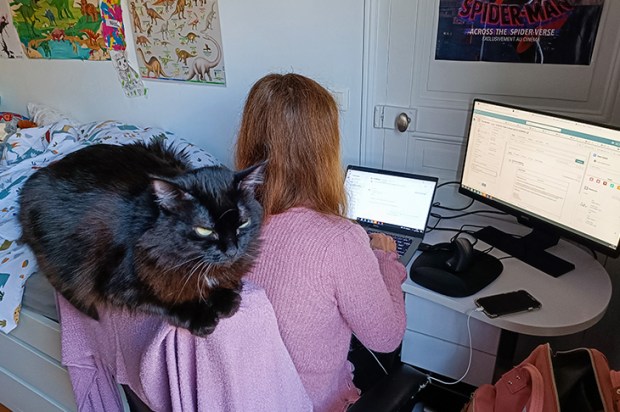My grandfather, GP, has a bright red Goggomobil Dart. It’s little, it’s noisy, and it hasn’t always been driveable. GP has always loved motorbikes and cars. There’d always be at least one or two in his garage: an old Triumph bike, a 1960’s sports car, a bottle-green Jaguar, or a new Subaru. Many years ago, he got the Goggomobil’s body. It was unpainted, with no motor. I was very young at the time, but I remember that he would say that it would be finished by the time I graduated high school.
(In my family, we used to recite that famous Yellow Pages ad: ‘g-o-gg-o’.)
The car wasn’t completed by the end of my secondary schooling: it took years more. The final product is driveable, and has been for a long while. My grandfather is a passenger only, nowadays.
Visiting Silicon Valley in January, I was reminded of the Goggomobil. A Google executive said they wanted the self-driving cars to be fully autonomous – no driver needed, from go to whoa – by the time a colleague’s child was old enough to get a licence. I guess we’ll find out whether Google [x], the ‘moonshots’ division of the Google/Alphabet group of companies, has more luck meeting that timeframe than my grandfather did meeting his.
It seems likely that the technology will be ready very soon. My colleagues and I took a ride in a self-driving car, on the streets of the town of Mountain View. The locals seemed unperturbed: the cars are probably fairly mundane for them, since Google [x] has been developing these vehicles, and testing them, for the last seven years or so.
The technology was science fiction only a few years ago. That seems to be what Astro Teller – who heads Google [x] now – and Sebastian Thrun, the former head who kicked off the self-driving cars project, mean by the term ‘moonshot’: something that seems impossible but can be achieved through human enterprise and ingenuity (along with squillions of dollars).
The cars still need a human to take over the wheel, but that’s changing. Google recently reported that by the end of 2015 the cars handed over control to a person once every 5,300 miles. That’s down from once every 785 miles in late 2014.
I grew up reading Robert Heinlein and Ray Bradbury. Technology that seems to have sprung from the pages of science fiction resonates with me. I think anyone would be excited to get into a car that navigates the streets, while stopping at signals, avoiding pedestrians, and monitoring bicycles.
When Dr Teller spoke at a bipartisan event I co-hosted at Parliament in Canberra, quite a few questions went to people’s fears. What would self-driving cars mean for safety? What would they mean for insurance costs, both in relation to your own property and your own safety, and that of others? Would people not be able to afford to drive any more because of prohibitive premiums? What regulation will be in store once self-driving cars become much safer than those driven by humans? He responded in substance and also asked people to think of the possibilities, rather than be afraid of the future.
The applications of a car that can sense things a human driver couldn’t see – a pedestrian obscured by traffic, for example – and that can be operated by someone who can’t drive, are obvious. Imagine your elderly relatives getting out and about independently. Or working parents sending the car to pick up the kids. Or pre-programming your car to drive you home after a night out.
If the tech becomes widespread and affordable, that will change things. It will affect, at least, couriers and deliveries, armoured vehicles, logistics firms and truck drivers, ride-sharing firms (and taxis if they still exist), car-sharing schemes, public transport, tourism, pubs and more.
The race is on to get to market. Google is far from the only firm developing self-driving cars, though it’s probably the most famous for doing so. Some firms don’t subscribe to the approach of exclusively developing vehicles that are fully autonomous. They are building cars that drive themselves only some of the time, with the driver being required to pay attention throughout. High-end vehicle manufacturers have been spending billions on semi-autonomous cars. Volvo expects to release a car that will guide itself in 2017. Tesla made its cars semi-autonomous via a software update in October. The company’s also already updating its electric vehicles’ software so an owner can ‘summon’ the car, which will then drive itself out of the garage to a more convenient point for the driver. Elon Musk says fully autonomous cars are only a few years away.
Dr Teller has a point in saying we need optimism, not fear. You can’t hide from the future, nor can you stop it. So the question is, as it has always been, how do you get the benefits and at the same time smooth some of progress’s rough edges? It’s a question that must be considered far beyond Silicon Valley. Alongside technological capability, and getting the economics right (far from a given at this stage), establishing a mass market for these cars will also involve regulation: of risk, liability, road rules, and safety requirements. In January, the Obama administration announced, alongside funding for R&D, a plan to work with the states and the American Association of Motor Vehicle Administrators within six months to develop regulations. The US needs to move swiftly to avoid the prospect of having a patchwork quilt of regulation across the country. Australia should move swiftly, too.
Driving, like horseriding, could become a skill largely for enthusiasts. Motor cars rapidly went from being novelties to being ubiquitous at the turn of the last century. It’s possible that today’s driver-dependant cars will be made obsolete fairly quickly, too. Perhaps they’ll become newer versions of my grandfather’s Goggomobil Dart: projects for restoration, to be taken out for a drive now and then. Cars driven only for pleasure.
Got something to add? Join the discussion and comment below.
Terri Butler is the Labor MP for Griffith
You might disagree with half of it, but you’ll enjoy reading all of it. Try your first month for free, then just $2 a week for the remainder of your first year.










